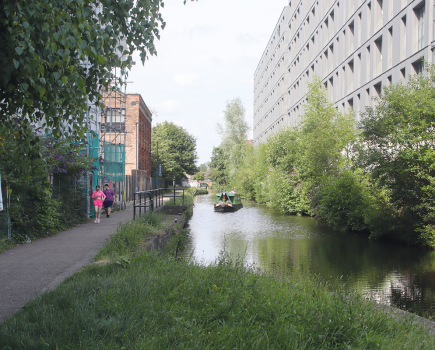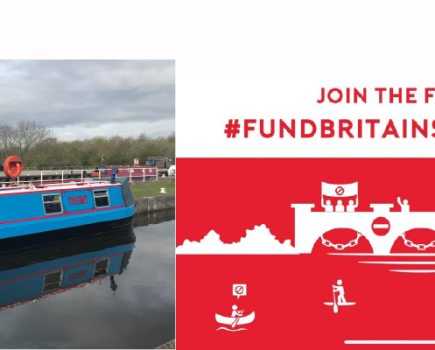Ribble Link
Words and images: Stuart Coney
There are certain things in life we really wish we could do. If you are a football fan it might be seeing your team win the FA Cup at Wembley. If you are a rugby fan then seeing England winning the Grand Slam at Twickenham. Or, if you are a golfer, playing a great round at St Andrews.
The boating equivalent for me was my trip last summer on the Ribble Link and cruising the Lancaster Canal – what a great experience, and one I would recommend you add to the ‘must do’ trips on the English waterways. The two parts of the journey are totally different; the exhilarating crossing, followed by the peace and tranquillity of the lock-free Lancaster Canal.
Opened in 2002, this year is the tenth anniversary of The Millennium Ribble Link, which was the first new navigation to be built in England since the Manchester Ship Canal in the 19th Century. It may not be the simplest of journeys, but it is well worth the effort to experience this new feat of engineering and the imaginative route connecting the Lancaster Canal to the rest of the system.
I had read a number of articles and blogs about the journey before we made the trip last June. Though everybody has their own opinion and varying views about the crossing, the one thing that is common throughout – and with which I totally agree – is about the preparation. It’s not one of those trips where you want to leave things to chance; ensuring your engine is as ready as it will ever be, is key. I have a 57ft boat, Y-Knot (which was featured in ‘Me & My Boats’, in the April 2012 issue of Canal Boat), with a Beta 43 engine; so there is plenty of power and it certainly had its best run out.
The overall journey is around five hours, with the crossing itself taking two hours. You are running against the tide on the River Douglas and the River Ribble, with the engine at a good 2200 revs in order to meet a deadline. The two hours allowed for the passage is a pretty tight timescale, but it is governed by the water levels in the locks at both ends of the journey.
Okay, it is not a normal day out on the cut – but there isn’t anything to worry about, particularly if you are used to cruising on rivers. There is a useful skippers’ guide supplied when you book your passage, the British Waterways guys on the Savick Brook Link are brilliant, and then there is Harry.
You have to book with British Waterways in Wigan, and its advice is to book early to avoid disappointment. So I booked my passage for June last year as soon as the dates became available. I was lucky enough to receive my requested dates for a two week period, which seemed to be the right length of time to enjoy the Lancaster Canal without have to rush anywhere.
The experience really starts as you leave the main Leeds & Liverpool Canal and turn into the Rufford Branch, heading up to Tarleton Lock – where the tidal crossing begins. The Rufford is very quiet compared to the mainline L&L, as the only real traffic is boats going to or from the Lancaster. It is worth spending a couple of days, if you have the time, enjoying this peaceful backwater. I can recommend a visit to the Ship Inn by Lock 2 for a meal and it’s only a half mile walk from a good mooring, just north of Lock 4.
Facilities are limited as British Waterways has closed the sanitary station at the entrance to the Rufford, although the water point is still there. St Mary’s Marina, near the top of the branch, is handy to fill up with diesel, as there aren’t many opportunities on the Lancaster. Mark, the marina owner and fellow boater, was very helpful and gave us a few tips about the crossing and where to moor on the Lancaster.When you arrive at Tarleton, the overnight moorings are right by Town End Swing Bridge – there aren’t any at the boatyard or by the lock and it can be quite tricky reversing back if you go too far.
Tarleton village has a good selection of food offerings and, if you need to stock up, there are quite a few shops including a good bakery. The boatyard appeared to be just moored boats and I couldn’t find any sign of a chandlery for those last-minute items that you may have forgotten.
We met our cruising partners when we moored up including Linda and Andy on their Ladyline Hotel boats, whom we had met two years ago on the Great River Ouse – what a coincidence. There are normally six boats in each crossing, and you are paired up the night beforehand by Harry the lock-keeper, who finds you at your mooring – he is not based at the lock.
Harry is a true character, I guess he is in his mid-seventies and he knows the answers to all your questions. He runs through everything you may need to know about the crossing, including the timings.
When it was time to go, we all set off on the 600 yards or so up to the lock, making sure we didn’t get there too early as there is nowhere to moor – you just hover in the cut alongside the moored boats waiting for your turn to go.
Entering Tarleton Lock is just like any other. It is manned and operated by Harry, and it’s here he shares his final words of wisdom with you and your partner boat before you are catapulted out of the gates. Well that’s a slight exaggeration – but it is the first time I can remember leaving a lock on full throttle. The lock itself is on a slight bend of the River Douglas, so the current can push you over to the side; which is why leaving the lock at speed is important.
Sailing down the river at 2200 revs and making slow progress shows the strength of the current, as it takes about an hour to cover the four miles to the Asland Lamp and the starboard turn into the Ribble Estuary. We were the last boat in the convoy and paired up with David and Gail on nb Anita Gail, who were setting the pace in front of us. It was very useful to swap telephone numbers in advance of the sailing, just in case of an emergency and also to keep in touch as we did at various points along the way; although the strength and noise of the wind did not encourage long conversations.
When we reached the Asland Lamp marker point we turned to starboard into the Ribble as directed, making sure we gave the marker a very wide berth so as not to hit the underwater obstructions. The estuary is a lot wider than the River Douglas, but it is clearly marked and plain sailing against the tide for a further 3.5 miles to the turn into Savick Brook. Both of us telephoned the British Waterways guys at Savick Brook as instructed when we reached the appropriate marker point, to let them know of our progress. The tide was a strong one that day and we were told we had to speed up as we only had ten minutes to make it into Savick Brook.
We reached the rotating sea lock with minutes to spare and were glad to see the friendly faces of the British Waterways staff who were going to escort the convoy through the nine locks up onto the Lancaster Canal.
Savick Brook is exactly as it is named – a brook. The channel is very narrow, with reeds on both sides and quite a few 90 degree bends, particularly at the beginning of the navigation.
To my surprise, when turning out of one of these bends I heard the shout of ‘fore’ and ducked as a golf ball come sailing past the boat as we passed one of the tees on the local golf course. Fortunately, that was the only surprise we encountered, as I was expecting the oncoming final challenge – a double lock that I needed to enter astern, immediately after a narrow concrete bridge.
The British Waterways staff who escorted us were very helpful and worked most of the locks for us, with smiles on their faces and friendly banter all the way.
So, five hours after setting off, we reached the Lancaster Canal. We waved goodbye to the British Waterways guys and headed for a mooring a couple of miles away. The Lancaster is quite shallow and moorings outside of the designated areas are hard to find, so we were very pleased with our tip from Mark at St Mary’s Marina.
Just after bridge 28 and before the M55 motorway we found the quiet, rural spot just deep enough to moor; brilliant, as by then we were pretty tired and didn’t really want to mess around trying to find somewhere to put the pins in.
The Lancaster Canal met all of our expectations, there are some great places to stop and our favourite was Hest Bank. It’s the only place I know of on the system where you can moor up with a view of the sea and, what’s more, it is only a five minute walk to Morecambe Bay.
Glasson Basin, reached via the Glasson Arm, is almost like mooring in a Mediterranean harbour. It is another good overnight stop, especially if you are having withdrawal symptoms from not operating a lock or two. The Smokehouse sells a wide range of fish, and you can even see kippers being smoked.
Tewitfield, at the most northerly point of the canal, offers an opportunity to see the work the Lancaster Canal Trust is doing to restore the Northern Reaches to Kendall. The locks running alongside the busy M6 motorway are still in place, but are unfortunately unusable at present.
If you want a change from the cut, then you can catch the bus from Tewitfield for a very enjoyable day out at Lake Windermere.
What a fantastic two weeks’ travelling on a great section of our waterways to the most north westerly point. If you can make it, I hope you enjoy it as much as we did.







